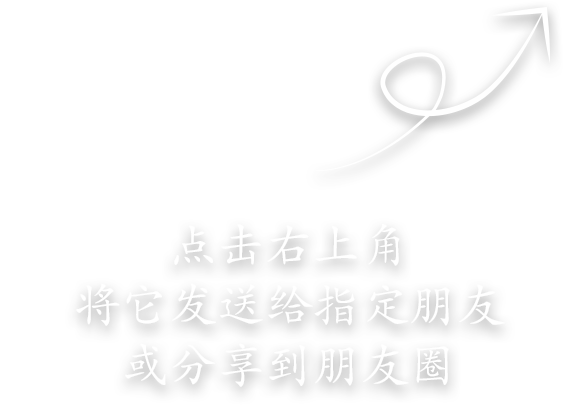2025
You can also participate in the creation of our 2025 project!
Click RECRUITMENT for detailed information.
2024
Our 2024 PBL project is underway!
2023
Differential physiological response of microalgae under bio-based polylactic acid and petroleum-based polystyrene microplastic
Luming Jin1*, Jia Fu1*, Shuhan Hu1*, Jiaqi Sun1*, Jingwen Wu1*, Yihe Xu1*, Xuanming Zhang1*, Xiaoming Wang1
1Hefei Thomas School, Hefei, China
*These authors contributed equally to this work.
Petroleum-based plastic pollution has become a severe problem all over the world. Bio-based plastics, on the other hand, have garnered the attention of researchers since their appearance because of their simpler molecular structure and easier degradation. However, until now, almost no studies have clearly compared the biological toxicity and environmental hazards of the two types of plastics to the organisms in the ecosystem. To answer this question, two kinds of microalgae (Chlorella pyrenoidosa and Tetradesmus obliquus) are selected and exposed to two types of microplastics (polystyrene and polylactic acid). Various methods are used in order to examine whether petroleum-based and bio-based plastic exhibit different physiological effects on microalgae and the degradation of microplastics. The results indicated that growth rates and photosynthetic activities of microalgae decreased with increasing microplastic concentration when exposed to PS. The maximum inhibition ratio measured in C. pyrenoidosa and T. obliquus was about 53% and 20%, respectively, over a 72-h period. The inhibition ratio in PLA-treated groups was significantly lower than in PS-treated groups at the same concentration, and the photosynthetic activities of microalgae decreased more dramatically with PS than with PLA. High concentrations of PS induced significant oxidative stress and elevated levels of SOD and MDA, whereas PLA, at any tested concentration, did not produce significantly different effects. The findings indicate that petroleum-based plastics like PS have a more detrimental effect on microalgae compared to bio-based plastics, likely due to differences in obstructing light absorption and causing oxidative damage. Furthermore, the effects of plastics on C. pyrenoidosa are less obvious than those on T. obliquus. Our study provides reliable data on the different impacts caused by two types of plastics and gives a potential way to reduce hazards caused by plastics.
A method of agricultural wastewater reuse based on Spirulina
Hongfan Deng1, Luming Jin1, Modi Wu1, Yihe Xu1, Xiaoming Wang1
1 Hefei Thomas School, Hefei, China
*These authors contributed equally to this work.
Agricultural wastewater is becoming a global problem, seriously polluting major water bodies in some regions. This wastewater has the characteristic that the sources of pollution are dispersed in the countryside. Therefore, it is necessary to explore a low-cost treatment method. First, we compared the growth of spirulina in simulated wastewater and a common large-scale medium to verify that spirulina can adapt to the growth environment of simulated agricultural wastewater. Secondly, we used total nitrogen, total phosphorus, and chemical oxygen demand as the indicators of agricultural wastewater purification to test the purification effect of spirulina on wastewater. Finally, we found that simulated agricultural wastewater with high nitrogen content can be toxic to spirulina, so spirulina-based treatment methods still need to be further studied and developed. Our research provides options for the low-cost purification and reuse of agricultural wastewater.
2022
Heterotrophic culture of Spirulina platensis improved its growth and the study of its nutritional effect
Luming Jin1, Ningcheng Yu1, Yuzhe Jiang1, Yiming Li1, Xiaoming Wang1
1 Hefei Thomas School, Hefei, China
Nov 18, 2023
https://doi.org/10.59720/23-116
With the development of human civilization, many people in the world still suffer from hunger due to wars, epidemics, and other causes such as not being able to afford a healthy diet. As a food, raw material with huge market potential, Spirulina platensis can be used as a new resource for food and has been in large-scale industrialized production worldwide. However, one of the biggest limitations to growing microalgae on an industrial scale is the high cost of the culturing medium. To reduce the culture cost, we hypothesized that S. platensis could grow better in a medium supplemented with glucose. In this study, we investigated the effects of Zarrouk’s medium, Central Food Technological Research Institute (CFTRI) medium, and CFTRI with glucose on the growth rate and biomass of S. platensis. Our results showed that compared with the expensive Zarrouk’s medium containing trace elements, adding a small amount of glucose to the low-cost CFTRI medium significantly increased S. platensis’s growth rate and biomass. Then, to further reduce breeding costs, we continued to explore the growth of S. platensis in a CFTRI medium supplemented with glucose under dark conditions. Our statistical data showed that the heterotrophic glucose consumption of S. platensis was affected by light, and the growth of S. platensis was limited in the absence of light. Finally, we used Drosophila melanogaster to verify the function of S. platensis and found that S. platensis supplementation increased longevity and reproductive ability in fruit flies.
2021
Enhancing activity of antibiotics against Staphylococcus aureus with Shuang-Huang-Lian
Ye Liu1*,Pui Ki Ng1*,Yin To Ng1*,Xiaoming Wang1
1Hefei Thomas School, Hefei, China
*These authors contributed equally to this work.
Sep 29, 2022
https://doi.org/10.59720/22-114
Staphylococcus aureus is a major pathogen in both hospitals and the community and can cause systemic infections such as pneumonia. Multi-drug resistant strains, such as Methicillin-resistant S.aureus (MRSA) are particularly worrisome. Bacterial antibiotic resistance can be attributed to various mechanisms including antibiotic inactivation. In order to reduce the development of bacterial resistance, we hypothesized that two selected traditional Chinese medicines, Shuang-Huang-Lian (SHL) and Lan-Qin, would be effective against S. aureus. In this study, we carried out the zone of inhibition determination of five antibiotics including amoxicillin, gentamicin, penicillin, clarithromycin, cefazolin, and the traditional Chinese medicines SHL and Lan-Qin. The preliminary screening results showed that all the drugs except Lan-qin exhibited antibacterial effects. Then, we conducted quantitative determination experiments to further explore the bacteriostasis of different drugs. The results of minimum inhibitory concentrations(MICs) and minimal bactericidal concentrations(MBCs) determination indicated that penicillin had the best inhibitory effect on bacterial growth, and clarithromycin killed all the bacteria at the lowest concentration. Also, we tested the combined effect of SHL with different antibiotics against S. aureus and calculated the fractional inhibitory concentration(FIC) of the antibiotics. The results showed that SHL had a synergistic effect with gentamicin as well as additive effects with penicillin and cefazolin against S. aureus by decreasing MICs of antibiotics compared to using antibiotics alone. Our study provides a reference for the clinical treatment of S. aureus infection in combination with traditional Chinese medicines.
2020
PCR technology for screening genetically modified Soybeans
Yinhe Ma1, Zhifan Yin1, Runze Zhu1, Xiaoming Wang1
1 Hefei Thomas School, China
Nov16, 2021
https://doi.org/10.59720/21-103
Genetically modified (GM) crops involve transferring a specific stretch of DNA into the plant’s genome and giving it new or different characteristics. Since the first industrial application of transgenic crops in the United States in 1996, GM crops are becoming increasingly common in the market. At present, not all crops in the Chinese market are clearly marked as to whether they are GM crops or not. In order to protect consumers’ options to select their preferred products, we decided to conduct experiments to identify soybeans on the market. We hypothesized that soybeans on the market with unknown origin were GM soybeans. Then we established a detection method using genetic technology and screened the soybeans. In this study, we used GTS 40-3-2 as a positive control, which contains genomic DNA, foreign enolpyruvylshikimate-3-phosphate synthase(EPSPS), and other exogenous elements, and GTS 40-3-2 SOYA BEAN (blank) as a negative control, which contains genomic DNA only. To amplify the foreign DNA, we optimized the polymerase chain reaction(PCR) procedure by attempting different annealing temperatures to establish the PCR detection method. According to the electrophoresis results, in the samples from a local store, only genomic DNA lectin could be amplified, which indicated the samples were non-GM soybeans. Our study not only provides a detection method but also lays a foundation for testing soybean and processed soybean products of unknown origin.

